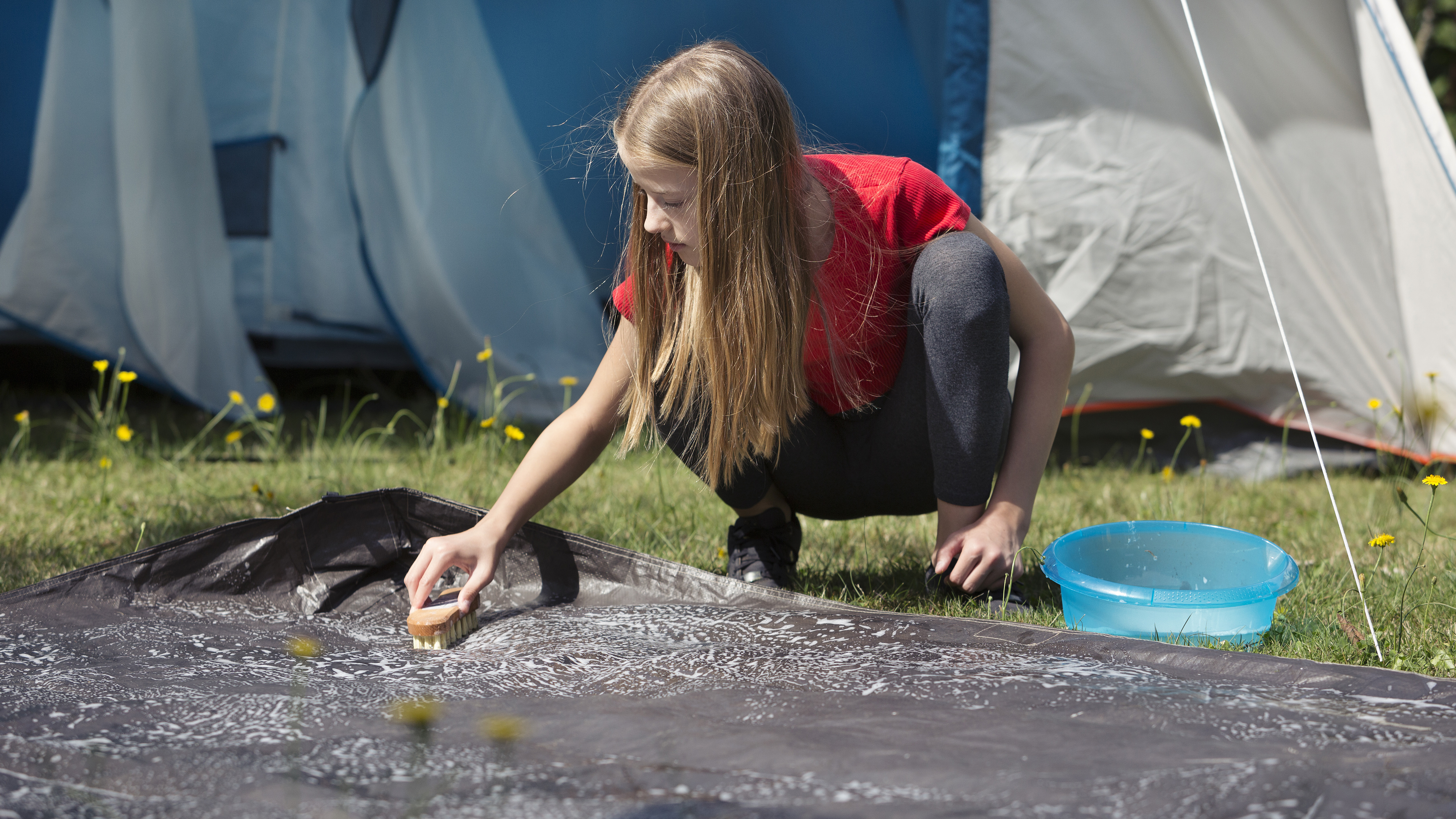No stupid questions: Can you clean a tent in a washing machine?
All outdoor gear gets grubby, including shelters – here’s how to clean a tent (and how not to)



Sadly, it’s not uncommon to come back from a camping escapade in the wilds with a car full of filthy kit, including your trusty tent, hastily and untidily packed away during that worst part of any trip – the site breakdown.
However unattractive the idea may be, you know you’re going to have to deal with the dirty gear sooner rather than later—certainly before you store it for any length of time. Otherwise, you’re going to be rightly upset the next time you get it out and discover that it’s covered in muck and mould (and potentially fatally damaged as a result).
Cleaning off your hiking boots, favourite wellies, apparel such as waterproof jackets, and gear like camping chairs is one thing, but getting your tent clean is another – far more daunting – matter altogether. It’s at times like these your mind does start to wander, in search of quick solutions… such as ‘Can I clean my tent in a washing machine?’
They say there is no such thing as a stupid question, but this is up there – somewhere slightly south of ‘Can I clean my dog in a washing machine?’ For the avoidance of doubt (and out of concern for your four-legged friend), before I go any further, I am just going to quickly say no. No, you can’t. To both questions.
Not if you love your tent and your dog. And what kind of monster doesn’t love their canine buddy and canvas home-from-home more than anything else in the world?
Do I really need to wash my tent?
The best approach is prevention – keep your tent clean and you won’t need to wash it often. Remove outdoor footwear like walking boots and hiking shoes at the door, avoid letting wet pets in if possible, try not to eat inside the tent unless you have to and keep dirty clothes in a bag outside.
Do all of those things and you’ll be pleased to know that, for the most part, you can get away with sweeping out the inside of your tent – to ensure no sand, grit, mud and other detritus is left behind before you roll it up – and then spot cleaning the outside.
Get all the latest news, reviews, deals and buying guides on gorgeous tech, home and active products from the T3 experts
Often it’s only the flysheet that will get really dirty, along with the groundsheet if you pitched on muddy ground, and these can commonly be quickly wiped off. A tent isn’t like a base layer or a pair of hiking trousers – and unless your camping trips are radically different to mine, you’re not typically going to get too much sweat and other bacteria-breeding substances on the material, so you don’t need to wash shelters as often as clothing.
However, after any trip where you get your tent properly filthy, it’s essential to wash it properly – any significant amount of dirt will impact the performance of your shelter, and some boggy terrain is quite acidic, which can really damage materials. You can also help prevent the spread of invasive flora and fauna by washing your kit in between trips, including tents and anything that comes in contact with the ground. And to improve the lifespan of the product, it’s well worth giving your tent a good clean at least once a season.

Right, so why can’t I wash my tent in the washing machine?
The answer, mainly, is that the vigorous laundering process and the chemicals used in it will damage your tent, reducing its functionality and performance levels, or trashing it entirely. Washing machines can be very rough on technical apparel, especially during the spinning cycles. It’s one thing washing a pair of tough hiking socks or a hardy fleece, but imagine a guy rope getting caught around the drum during a spinning cycle. Carnage.
The materials used in the construction of a good tent are durable enough to withstand a beating by the elements, but they’re not made to survive being spun at 1,000 revolutions a minute. Also, larger tents are very heavy, especially when wet, and you may well end up wrecking your washing machine as well as your tent, which is an expensive mistake to make.
How should I wash my tent, then?
The first thing to do is clean the inside as described above, sweeping it out with a soft brush and dustpan. Many dome tents can be unpegged, tipped completely upside down, and shaken out. Be sure to clean the poles and pegs, too (there's no point getting the tent material clean if you then store it with dirty pegs).
If the outside of the tent is mucky, let it dry off as much as possible, then brush the dusty mud off the exterior with a small brush. If you have access to a bath, run a tub full of lukewarm water with a small amount of specialist detergent such as Nikwax Tech Wash [external link] in it. Put the tent in the water and clean the dirt off with a cloth. Drain the water away and then run another tub of completely fresh water with no detergent, and thoroughly rinse the tent. After this is done, hang the whole lot up somewhere and leave it to completely dry (this might take a day or more).
If you don’t have access to a bath (or someone won’t let you use it for washing kit) pitch the tent somewhere secure, where it can remain for a while, and then gently hose and sponge the material down. The best thing to use here is a purpose-made tent-cleaning substance [external link] from a specialist brand such as Nikwax. Afterwards, leave the tent up until it is completely dry.
Whether you’re washing your tent in the bath or outside, it’s important to pay special attention to areas such as zips. Using an old toothbrush is a good way to get grit out of the zip runner. If gunk is proving really stubborn, you can use some white vinegar in warm water to help break it down, but be sure to rinse this off well, as it’s also acidic.
The most important thing is to make sure your tent is 100% dry before you store it for longer periods because dampness can cause mould to develop and grow.

Author of Caving, Canyoning, Coasteering…, a recently released book about all kinds of outdoor adventures around Britain, Pat Kinsella has been writing about outdoor pursuits and adventure sports for two decades. In pursuit of stories he’s canoed Canada’s Yukon River, climbed Mont Blanc and Kilimanjaro, skied and mountain biked across the Norwegian Alps, run ultras across the roof of Mauritius and through the hills of the Himalayas, and set short-lived speed records for trail-running Australia’s highest peaks and New Zealand’s nine Great Walks. A former editor of several Australian magazines he’s a longtime contributor to publications including Sidetracked, Outdoor, National Geographic Traveller, Trail Running, The Great Outdoors, Outdoor Fitness and Adventure Travel, and a regular writer for Lonely Planet (for whom he compiled, edited and co-wrote the Atlas of Adventure, a guide to outdoor pursuits around the globe). He’s authored guides to exploring the coastline and countryside of Devon and Dorset, and recently wrote a book about pub walks. Follow Pat's adventures on Strava and instagram.